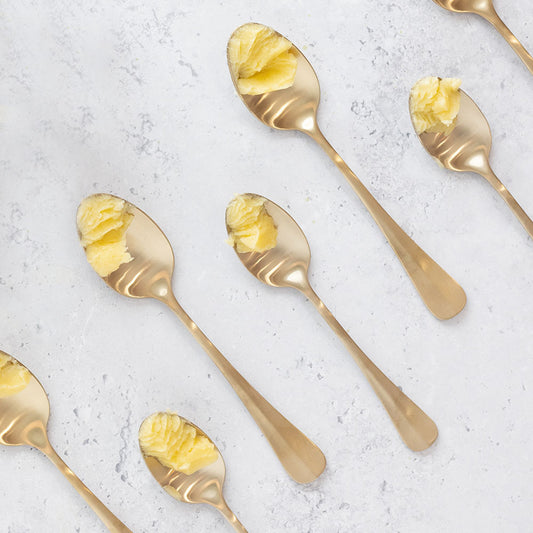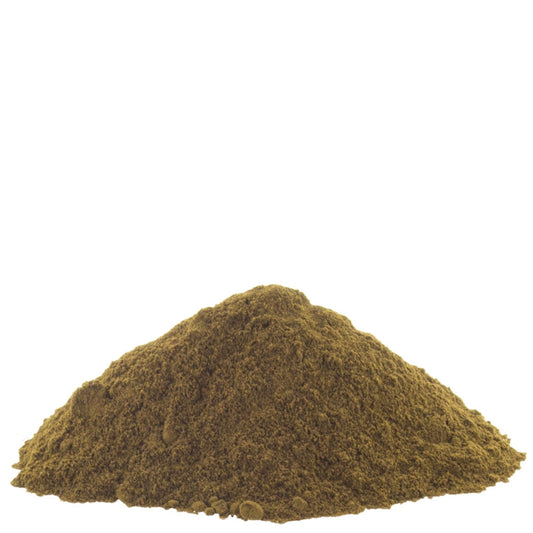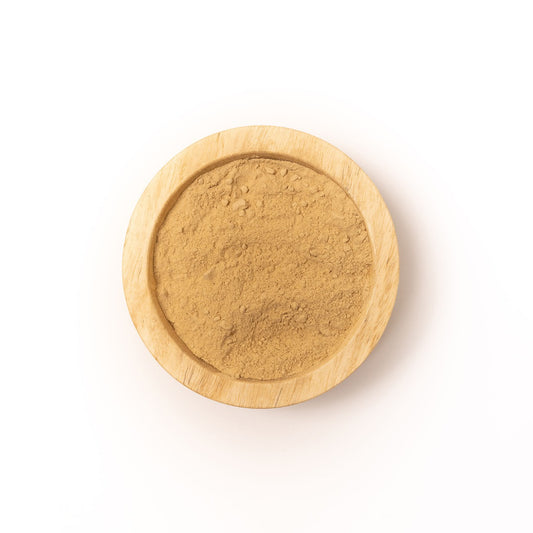Welcome to our Birthing Ayurveda Postpartum series, where we follow the developing story of one woman's first steps into motherhood and life in her new role.
Entering motherhood is a transition like no other. It is becoming a full-time caretaker and nurturer. In my life, it has been the closest I have ever been to true service. But getting to the point where I was physically, emotionally, and mentally whole again after the tremendous task of giving birth was quite a process that took much time and work.
The key to postpartum care of the mother is to calm vata(the ether and air elements). The mother is full of the mobile, light, dry, and cold qualities after the loss of energy and blood and fluids, not to mention the loss of a huge space in the abdomen (previously occupied by the baby). Add to that sleep deprivation and fatigue that comes from feeding and nourishing a newborn and you can see how
To that end, in
Diet
Always start with diet before anything else. It is important to note that the large depletion and high vata that accompanies delivery take a huge toll on the digestive fire (
During labor I had easy-to-digest but high-energy foods (like nuts, fruit, and soup). Once I delivered my baby and we were cleaned up, went through our religious rituals, and had some time to bond, the first thing I ate was a spoon of panchakola
Thereafter, my diet was a very slow progression of adding foods in complexity. Initially I ate a very watery soup made of water and mung dal, increasing the thickness of this soup. After a day or two, root vegetables (asparagus, beets, sweet potato, yam) were thrown in. Green vegetables came after (because they have more of an air quality and are therefore harder to digest), followed by milk and dairy. If you eat meat, that is the last thing you would add to the diet. This whole process took several weeks to about a month.
The two things that we used to gauge whether I was ready for the next step or not was my agni and level of
Remember to stick with the qualities opposite of vata—warm, mushy, oily, heavy, smooth, and dense. That means to also add ample amounts of ghee to each meal.
If you had a cesarean, you want to add ghee to your diet a little later after the incision has healed. Some ghee is good—but the question here is how much. Traditionally, it is recommended to wait to introduce ample amounts of ghee because the tissues need drier qualities to adhere and regenerate. Too much oiliness can slow down the process, so it is best to wait until the tissues have begun to adhere. If recovery is going well, this is typically a few days to a week after the cesarean. (This is general guidance. Be sure to work with your practitioner!)

Herbs
My herbal regimen combined herbs together in the following manner (largely determined by my mother, mother-in-law, and grandmothers according to tradition). Note again that they all mostly combat vata. These herbs will support the mother's diet, vata, and recovery. As always, make sure you check with your practitioner before taking any herbs while nursing.
- Fenugreek seeds soaked in water over night. Fenugreek is well-known to support lactation. It is also very helpful with vata and lower back discomfort.
- Small ball made of turmeric powder mixed with some ginger powder, jaggery, and ghee. I had this to support healing and jump-start my agni for the day first thing in the morning with the fenugreek water.
- Water boiled with dill, cumin, coriander, fennel, and vakumba (Careya arborea). All of these herbs are great digestive aids and some (dill, fennel) also support lactation. Vakumba is bitter and cleansing to the blood and liver and also helps kindle agni. My mothers made a huge pot of this every morning and I drank it throughout the day.
- Ladoo (ball of herbs and sweets) with my breakfast. My mother-in-law said that these are are made with thirty-two herbs. For the sake of simplicity, the main ingredients are ginger powder, shatavari powder, ashwagandha powder, pippali powder, nirgundi powder, saffron, and cardamom powder. As you can see, there are many agni kindling and building herbs. This herb mix was combined with whole wheat flour, ghee, coconut flakes, almonds, and golden raisins.
- A soup called raab, made of a spoon of whole wheat flour, a cinnamon stick, a couple clove buds, and a pinch of ajmoda seeds sautéed in ghee, which is then mixed in with hot water that has some jaggery melted in it. I had this with my breakfast as well.
- Afternoon sweet made up of wheat flour and urad daal flour, jaggary, ghee, a pinch of saffron, cashew powder, almond powder, coconut powder, and herbs (ginger, pippali, nutmeg, cinnamon, clove, cardamom, gundar or edible gum). I had this with my afternoon milk once I was able to digest the milk.
- A spoon of panchakola ghee to end the evening.
Yes it seems like a lot but all of these herbs worked synergistically to heal and build, while nourishing my digestive fire. Later on in my postpartum period I had to cut down on the herbs because my daughter was getting some heat rashes and baby acne—it's important to gauge your and your baby's bodies to see how to adjust your herbal intake.
Massage
Massage is the third cornerstone to maternal care after delivery. Nothing calms vata and soothes the entire body like warm oil. My mother gave me a full body massage with Ashwagandha Bala Oil every day in the morning. I showered with hot water with the oil on me and kept the oil in my hair (I washed my hair every third day or so). The oil tones the body, provides oleation where there is a lot of dryness, helps the healing of tissues, and infuses strength and a sense of groundedness. It was my thirty minutes of complete relaxation and allowing myself the gift of nourishment and love.
We ended the massage with fumigation. We made a tent with my knees bent up and a towel covering my legs. Then my mother lit some guggulu on a piece of charcoal and put it in the tent. The smoke helps with the healing of the perineum and strengthens the tissue in that area. I felt noticeably less swollen after this treatment.
If you do not have someone available to give you a massage or even just a head and foot massage, try to incorporate a self-massage as often as possible. In the end, we can only do the best that we can with what we have. Keep in mind the qualities that you want to bring and use diet, herbs, and massage to the best of your ability to support those qualities. The littlest things can truly go a long way.
DISCLAIMER
The views and opinions expressed in this article do not necessarily reflect the views and opinions of Banyan Botanicals. Our blog is a place where people who participate in and benefit from Ayurveda can share their experience and knowledge. Before starting any new activity, routine, or program, we recommend that you consult with your physician or healthcare provider. Please also note that our content is not meant to be a substitute for professional advice.










